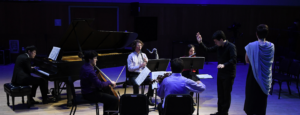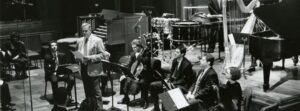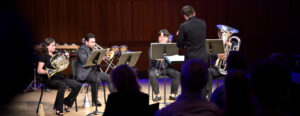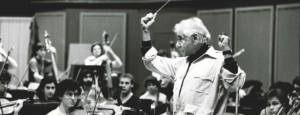Season and ticket information at Curtis.edu/100
Subscription tickets on sale April 2
Curtis’ centennial season features world-class conductors Yannick Nézet-Séguin, Osmo Vänskä, Teddy Abrams (’08), David Charles Abell, and Nicholas McGegan; newly commissioned works by composers Jerod Impichchaachaaha’ Tate and Viet Cuong (’19); and stunning classics by alumni George Walker (’45) and Samuel Barber (’34)
Superstar alumni Yuja Wang (’08), Ray Chen (’10), and Time For Three, featuring alumni Nicolas Kendall (’01) and Ranaan Meyer (’03), return to perform with the Curtis Symphony Orchestra
Curtis Opera Theatre presents a visionary and expansive line-up of contemporary opera and masterworks features the East Coast premiere of George Lewis and Claudio Monteverdi’s The Comet / Poppea, Wolfgang Amadeus Mozart’s comic masterpiece, Le nozze di Figaro, and Leonard Bernstein’s (’41) sparkling operetta Candide
Curtis New Music Ensemble (formerly Ensemble 20/21) celebrates Latin GRAMMY-nominated composer Gabriela Ortiz and award-winning faculty member Amy Beth Kirsten
The Curtis Present series features the Rosamunde String Quartet and renowned Curtis faculty members Michelle Cann (’13), Imani Winds, the Dover Quartet (’14), Roberto Díaz (’84), and Jason Vieaux
PHILADELPHIA, PA—March 21, 2024—Curtis Institute of Music’s historic 100th anniversary season begins this October with a yearlong celebration featuring bold and innovative programming that includes orchestra, opera, and chamber music concerts and recitals, totaling more than 150 performances in Philadelphia through May 2025. Curtis opened its doors on October 13, 1924, fulfilling the longtime dream of Mary Louise Curtis Bok, the school’s visionary founder, who believed in the transformative potential of every individual to make a positive impact in their communities and beyond. To mark its founding a century ago and to honor the legacy of Mrs. Bok, Curtis will launch its milestone season with Founder’s Day on Sunday, October 13, 2024, as generations of alumni will be invited to return to campus to reminiscence with one another, interact with current students, attend various concerts and festivities to be announced at a later date, and celebrate the past, present, and future of the school.
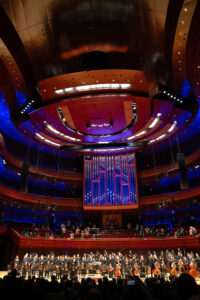 Throughout the 2024–25 season, Great to Groundbreaking, Curtis students—some of the finest young musicians in the world—move from the classroom to the stage, sharing their extraordinary passion for classical music through thrilling performances alongside internationally renowned guest artists, faculty, and alumni. The centennial season combines beloved repertoire favorites—such as Jean Sibelius’ Finlandia; Florence Price’s Symphony No. 1; Samuel Barber’s Violin Concerto, Op. 14; Antonín Dvořák’s Symphony No. 8; Claude Debussy’s La mer; and Leonard Bernstein’s No. 2, “The Age of Anxiety,” and comic operetta, Candide—with breathtaking new works—including the East Coast premiere of The Comet / Poppea at Philadelphia’s 23rd Street Armory, featuring composer George Lewis’ setting of W.E.B. Du Bois’ proto-Afrofuturist science fiction short story, The Comet, juxtaposed with Claudio Monteverdi’s hot-blooded political thriller, L’incoronazione di Poppea. The season also features an array of new compositions, world premieres, and much more. Subscription tickets are available April 2 at Curtis.edu/100; single tickets will go on sale in early May.
Throughout the 2024–25 season, Great to Groundbreaking, Curtis students—some of the finest young musicians in the world—move from the classroom to the stage, sharing their extraordinary passion for classical music through thrilling performances alongside internationally renowned guest artists, faculty, and alumni. The centennial season combines beloved repertoire favorites—such as Jean Sibelius’ Finlandia; Florence Price’s Symphony No. 1; Samuel Barber’s Violin Concerto, Op. 14; Antonín Dvořák’s Symphony No. 8; Claude Debussy’s La mer; and Leonard Bernstein’s No. 2, “The Age of Anxiety,” and comic operetta, Candide—with breathtaking new works—including the East Coast premiere of The Comet / Poppea at Philadelphia’s 23rd Street Armory, featuring composer George Lewis’ setting of W.E.B. Du Bois’ proto-Afrofuturist science fiction short story, The Comet, juxtaposed with Claudio Monteverdi’s hot-blooded political thriller, L’incoronazione di Poppea. The season also features an array of new compositions, world premieres, and much more. Subscription tickets are available April 2 at Curtis.edu/100; single tickets will go on sale in early May.
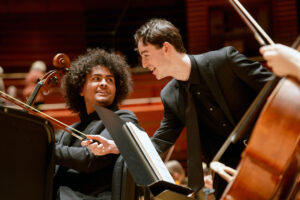 Hailed as “both a conservatory and a buzzword…known for taking the best music students in the world” (Washington Post), Curtis is excited to welcome its 160-member student body of exceptionally gifted young musicians to the school this fall as they hone their impressive artistic talents. In this unique and inclusive environment, they are nurtured by a celebrated faculty, supported by a merit-based, tuition-free policy, and inspired by the school’s distinctive learn-by-doing approach.
Hailed as “both a conservatory and a buzzword…known for taking the best music students in the world” (Washington Post), Curtis is excited to welcome its 160-member student body of exceptionally gifted young musicians to the school this fall as they hone their impressive artistic talents. In this unique and inclusive environment, they are nurtured by a celebrated faculty, supported by a merit-based, tuition-free policy, and inspired by the school’s distinctive learn-by-doing approach.
“Curtis’ centennial is a truly momentous occasion, and we can’t wait to celebrate with everyone the incredible achievements of our first century and our vision for our next 100 years. Our guest artists in this extraordinary season are a star-studded array of Curtis alumni, representing the kinds of inspiring and diverse career paths we foster at the school today,” says Roberto Díaz, president and CEO of Curtis. “Throughout the centennial, we’ll honor all the people, moments, and places that have made Curtis so special since we first opened our doors here in Philadelphia in 1924.”
Curtis Institute of Music 2024–25 Season Details
Curtis Symphony Orchestra
Curtis students join together each year to create one of the world’s great orchestras. Led by internationally renowned conductors and featuring dazzling repertoire, the Curtis Symphony Orchestra is an immersive experience with unique resonance. The ensemble presents four concerts this season in Marian Anderson Hall (formerly Verizon Hall), Kimmel Center.
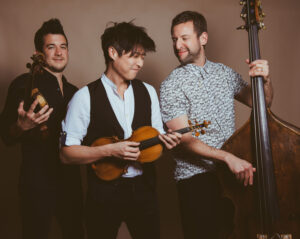 October 27: In the opening concert of the Curtis Symphony Orchestra series, eminent Finnish conductor Osmo Vänskä leads the Curtis Symphony Orchestra and GRAMMY Award-winning ensemble Time For Three in a concert of towering works that celebrate the extraordinary resilience of the human spirit in the face of great adversity, and defy genre with Jean Sibelius’ patriotic tone poem Finlandia, Jennifer Higdon’s (’88) bluegrass-tinged Concerto 4-3, and Sergei Prokofiev’s heroic Symphony No. 5.
October 27: In the opening concert of the Curtis Symphony Orchestra series, eminent Finnish conductor Osmo Vänskä leads the Curtis Symphony Orchestra and GRAMMY Award-winning ensemble Time For Three in a concert of towering works that celebrate the extraordinary resilience of the human spirit in the face of great adversity, and defy genre with Jean Sibelius’ patriotic tone poem Finlandia, Jennifer Higdon’s (’88) bluegrass-tinged Concerto 4-3, and Sergei Prokofiev’s heroic Symphony No. 5.
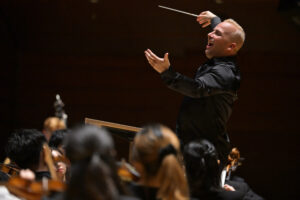 November 23:
November 23:
Four-time GRAMMY Award-winning pianist and conductor Yannick Nézet-Séguin leads the Curtis Symphony Orchestra in an afternoon of groundbreaking works. The program opens with British composer, conductor, and political activist Samuel Coleridge-Taylor’s lively Ballade for Orchestra, Op. 33. The concert continues with Florence Price’s iconic Symphony No. 1, the first symphonic work by a Black female composer to be played by a major American orchestra; followed by Antonín Dvořák’s pastoral Symphony No. 8, evoking the rolling green hills of the Bohemian countryside, rustic peasant dances, and folk melodies of the composer’s native homeland.
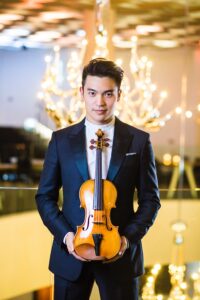 December 13: The continues with an electrifying performance by prizewinning violinist Ray Chen (’10) under the baton of acclaimed composer, pianist, and clarinetist Teddy Abrams (Conducting ’08). The program features composer and producer TJ Cole’s (’17) moving work Death of a Poet, and legendary composer George Walker’s (Piano and Composition ’45) landmark 1996 Pulitzer Prize-winning song cycle for vocal soloist and orchestra, Lilacs. Mr. Chen performs Samuel Barber’s (’34) monumental Violin Concerto, and the concert concludes with Aaron Copland’s ambitious, patriotic Symphony No. 3.
December 13: The continues with an electrifying performance by prizewinning violinist Ray Chen (’10) under the baton of acclaimed composer, pianist, and clarinetist Teddy Abrams (Conducting ’08). The program features composer and producer TJ Cole’s (’17) moving work Death of a Poet, and legendary composer George Walker’s (Piano and Composition ’45) landmark 1996 Pulitzer Prize-winning song cycle for vocal soloist and orchestra, Lilacs. Mr. Chen performs Samuel Barber’s (’34) monumental Violin Concerto, and the concert concludes with Aaron Copland’s ambitious, patriotic Symphony No. 3.
-
-
- December 15: Teddy Abrams, music director of the Louisville Orchestra, and dynamic violinist Ray Chen travel with the Curtis Symphony Orchestra to West Palm Beach, Florida, to present an encore performance of the December 13 Philadelphia concert at the Kravis Center for the Performing Arts, one of the premier performing arts centers in the Southeast. This concert is made possible through Curtis on Tour, the Nina von Maltzahn global touring initiative of the school. Ticket information will be available shortly.
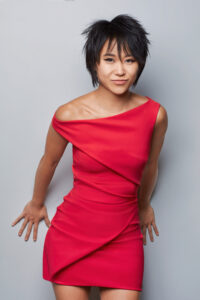 April 26: The 2024–25 series concludes with a guest appearance by one of the world’s most celebrated pianists, superstar Curtis alumna Yuja Wang (’08), performing Leonard Bernstein’s (Conducting ’41) astonishing, jazz-influenced Symphony No. 2, “The Age of Anxiety.” She joins the Curtis Symphony Orchestra and conductor Yannick Nézet-Séguin for a delightful program of classical music masterpieces featuring Lili Boulanger’s joyful D’un Matin de printemps (Of a Spring Morning), Maurice Ravel’s sumptuous orchestral song cycle Shéhérazade, and Claude Debussy’s evocative childhood recollections of the sea, the atmospheric symphonic sketches, La mer.
April 26: The 2024–25 series concludes with a guest appearance by one of the world’s most celebrated pianists, superstar Curtis alumna Yuja Wang (’08), performing Leonard Bernstein’s (Conducting ’41) astonishing, jazz-influenced Symphony No. 2, “The Age of Anxiety.” She joins the Curtis Symphony Orchestra and conductor Yannick Nézet-Séguin for a delightful program of classical music masterpieces featuring Lili Boulanger’s joyful D’un Matin de printemps (Of a Spring Morning), Maurice Ravel’s sumptuous orchestral song cycle Shéhérazade, and Claude Debussy’s evocative childhood recollections of the sea, the atmospheric symphonic sketches, La mer.
Curtis Opera Theatre
Through visionary productions, bold concepts, and narratives, the artists of the Curtis Opera Theatre prepare to become stars of the world stage. The combination of key elements of artistry—music, acting, singing, and design—allows these student-artists to create a lasting connection with audiences.
 November 1–3: Curtis Opera Theatre launches its historic 2024–25 series with the highly anticipated East Coast premiere of The Comet / Poppea, featuring MacArthur Award-winning composer George Lewis’ and librettist Douglas Kearney’s wildly inventive operatic setting of Pan-Africanist civil rights activist W.E.B. Du Bois’ 1920 science fiction short story, The Comet, juxtaposed with Claudio Monteverdi’s hot-blooded political thriller, L’incoronazione di Poppea (The Coronation of Poppea) from 1643. Presented at Philadelphia’s historic 23rd Street Armory on a turntable stage divided in two halves, these worlds unfold simultaneously, with the stage’s rotation creating a visual and sonic spiral for audiences—inviting associations, dissociations, collisions, and confluences. Directed and conceived by fellow MacArthur-winner Yuval Sharon, this innovative co-production features a stellar cast of Curtis singers led by conductor Marc Lowenstein, founding music director of The Industry in Los Angeles. Developed over six years, The Comet / Poppea is realized through a landmark partnership among organizations across the United States, produced by Anthony Roth Costanzo and Cath Brittan, The Industry, AMOC* (American Modern Opera Company), and Curtis Institute of Music. Performed in English and Italian with English supertitles.
November 1–3: Curtis Opera Theatre launches its historic 2024–25 series with the highly anticipated East Coast premiere of The Comet / Poppea, featuring MacArthur Award-winning composer George Lewis’ and librettist Douglas Kearney’s wildly inventive operatic setting of Pan-Africanist civil rights activist W.E.B. Du Bois’ 1920 science fiction short story, The Comet, juxtaposed with Claudio Monteverdi’s hot-blooded political thriller, L’incoronazione di Poppea (The Coronation of Poppea) from 1643. Presented at Philadelphia’s historic 23rd Street Armory on a turntable stage divided in two halves, these worlds unfold simultaneously, with the stage’s rotation creating a visual and sonic spiral for audiences—inviting associations, dissociations, collisions, and confluences. Directed and conceived by fellow MacArthur-winner Yuval Sharon, this innovative co-production features a stellar cast of Curtis singers led by conductor Marc Lowenstein, founding music director of The Industry in Los Angeles. Developed over six years, The Comet / Poppea is realized through a landmark partnership among organizations across the United States, produced by Anthony Roth Costanzo and Cath Brittan, The Industry, AMOC* (American Modern Opera Company), and Curtis Institute of Music. Performed in English and Italian with English supertitles.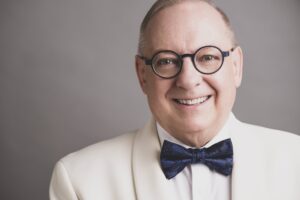 February 27–March 2: The Curtis Opera Theatre’s series continues with one of the great comic operas, Wolfgang Amadeus Mozart’s masterpiece, Le nozze di Figaro, a razor-sharp social satire with glorious arias, hilarious duets and trios, a toe-tapping overture, and an ingenious libretto that bursts to the seams with wit and invention. Distinguished conductor Nicholas McGegan OBE and acclaimed director Marcus Shields return to lead an exciting cast of young opera stars and the Curtis Symphony Orchestra at the Perelman Theater, Kimmel Center. Performed in Italian with English supertitles.
February 27–March 2: The Curtis Opera Theatre’s series continues with one of the great comic operas, Wolfgang Amadeus Mozart’s masterpiece, Le nozze di Figaro, a razor-sharp social satire with glorious arias, hilarious duets and trios, a toe-tapping overture, and an ingenious libretto that bursts to the seams with wit and invention. Distinguished conductor Nicholas McGegan OBE and acclaimed director Marcus Shields return to lead an exciting cast of young opera stars and the Curtis Symphony Orchestra at the Perelman Theater, Kimmel Center. Performed in Italian with English supertitles. April 11, 13: This historic Curtis Opera Theatre series closes with Leonard Bernstein’s (Conducting ’41) 20th-century operetta, Candide at the Forrest Theatre, one of America’s oldest theaters. Filled with sparkling wit, soaring melodies, and globe-trotting grandeur, this bitingly clever adaptation of Voltaire’s philosophical French novella is an absurdist romp across “the best of all possible worlds.” Led by internationally renowned conductor David Charles Abell and visionary theater and opera director Emma Griffin, this darkly satirical tale of youthful innocence and human folly in war-torn times of crisis is as relevant today as it was when it was first published in 1759. Performed in English with English supertitles.
April 11, 13: This historic Curtis Opera Theatre series closes with Leonard Bernstein’s (Conducting ’41) 20th-century operetta, Candide at the Forrest Theatre, one of America’s oldest theaters. Filled with sparkling wit, soaring melodies, and globe-trotting grandeur, this bitingly clever adaptation of Voltaire’s philosophical French novella is an absurdist romp across “the best of all possible worlds.” Led by internationally renowned conductor David Charles Abell and visionary theater and opera director Emma Griffin, this darkly satirical tale of youthful innocence and human folly in war-torn times of crisis is as relevant today as it was when it was first published in 1759. Performed in English with English supertitles.
Curtis New Music Ensemble
Curtis New Music Ensemble’s (formerly Ensemble 20/21) repertoire features works from the 20th and 21st centuries. With a rich legacy of bold collaborations and striking productions, the ensemble embraces the cutting edge of contemporary classical music through the highest level of artistry. In the 2024–25 series, Curtis New Music Ensemble presents three concerts in Curtis’ Gould Rehearsal Hall.
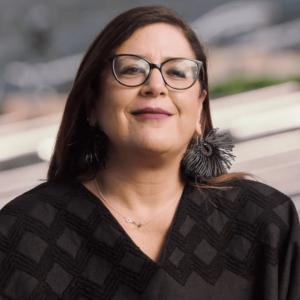 October 12: The first concert of the Curtis New Music Ensemble series celebrates this year’s composer in residence with a “Portrait of Gabriela Ortiz,” featuring works by the Latin GRAMMY-nominated composer and educator. One of Mexico’s most prominent composers, with an international career that includes recent commissions from the Los Angeles Philharmonic and the New York Philharmonic to the BBC Scottish Symphony and the Royal Liverpool Philharmonic, Ms. Ortiz’s music incorporates seemingly disparate musical worlds, from traditional and popular idioms to avant-garde techniques and multimedia works.
October 12: The first concert of the Curtis New Music Ensemble series celebrates this year’s composer in residence with a “Portrait of Gabriela Ortiz,” featuring works by the Latin GRAMMY-nominated composer and educator. One of Mexico’s most prominent composers, with an international career that includes recent commissions from the Los Angeles Philharmonic and the New York Philharmonic to the BBC Scottish Symphony and the Royal Liverpool Philharmonic, Ms. Ortiz’s music incorporates seemingly disparate musical worlds, from traditional and popular idioms to avant-garde techniques and multimedia works.- February 25: The second concert of Curtis New Music Ensemble’s 2024–25 series highlights the “Bold Experiment” initiated by Mary Louise Curtis Bok in 1924 when she opened the conservatory in Philadelphia. This eclectic concert features musical and academic explorations of the 20th century, including works by Curtis alumni. Among the selections chosen for this year’s concert, the program will feature late Pulitzer Prize-winning modern classical and avant-garde composer George Crumb’s foreboding “voyage of the soul,” Black Angels, for electric string quartet. Subtitled “Thirteen Images from the Dark Land,” this gripping piece, written during the Vietnam War, captures the horrors, anguish, and upheaval of the era and was conceived as a parable for a troubled contemporary world, as poignant then as it is now.
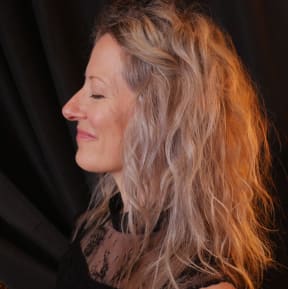
- May 10: Curtis New Music Ensemble’s series closes with a tribute to acclaimed composer, poet, filmmaker, vocalist, director, and Curtis composition faculty member Amy Beth Kirsten. The group presents the world premiere of Ms. Kirsten’s Infernal Angel, focused on the life of Gille de Rais, the notorious 15th-century medieval knight turned serial killer. This thrilling chamber piece will be paired with another new full-length theatrical work, Savior, inspired by the mystical life and death of de Rais’ comrade-in-arms, Joan of Arc.
Curtis Presents
Past and future meet through Curtis Presents, which features a diverse collection of artists—alumni, faculty, students, and contemporary creators—whose musical foundations are rooted in the Curtis community. This series of intimate and innovative recitals offers a unique experience with exceptional artistry and one-of-a-kind programs.
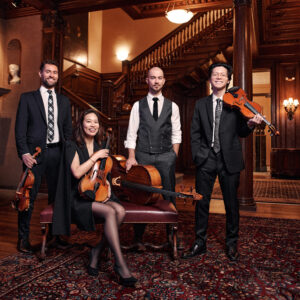 October 25: The 2024–25 Curtis Presents series kicks off with another “masterly nuanced performance” (Wall Street Journal) from the Dover Quartet, the Penelope P. Watkins Ensemble in Residence, featuring Joel Link (String Quartet ’14, Violin ’11), and Bryan Lee (String Quartet ’14, Violin ’11), violist Julianne Lee (Violin ’05), and Camden Shaw (String Quartet ’14, Cello ’11, ’10). This riveting program features Jessie Montgomery’s folk music-inspired Strum; Pura Fé’s Rattle Song, arranged by Jerod Impichchaachaaha’ Tate; a new, Curtis-led co-commissioned work for string quartet composed by Mr. Tate; and Antonin Dvořák’s String Quartet in F major, Op. 96 (“American”). Named one of the greatest string quartets of the last 100 years by BBC Music Magazine, the two-time GRAMMY-nominated ensemble is one of the world’s most in-demand chamber ensembles. The prize-winning quartet was formed at Curtis in 2008, and its name pays tribute to the composition Dover Beach by fellow Curtis alumnus Samuel Barber.
October 25: The 2024–25 Curtis Presents series kicks off with another “masterly nuanced performance” (Wall Street Journal) from the Dover Quartet, the Penelope P. Watkins Ensemble in Residence, featuring Joel Link (String Quartet ’14, Violin ’11), and Bryan Lee (String Quartet ’14, Violin ’11), violist Julianne Lee (Violin ’05), and Camden Shaw (String Quartet ’14, Cello ’11, ’10). This riveting program features Jessie Montgomery’s folk music-inspired Strum; Pura Fé’s Rattle Song, arranged by Jerod Impichchaachaaha’ Tate; a new, Curtis-led co-commissioned work for string quartet composed by Mr. Tate; and Antonin Dvořák’s String Quartet in F major, Op. 96 (“American”). Named one of the greatest string quartets of the last 100 years by BBC Music Magazine, the two-time GRAMMY-nominated ensemble is one of the world’s most in-demand chamber ensembles. The prize-winning quartet was formed at Curtis in 2008, and its name pays tribute to the composition Dover Beach by fellow Curtis alumnus Samuel Barber.- March 13: The internationally acclaimed Rosamunde String Quartet returns for an unforgettable night of chamber music. This remarkable ensemble features young stars from three of the world’s greatest orchestras:
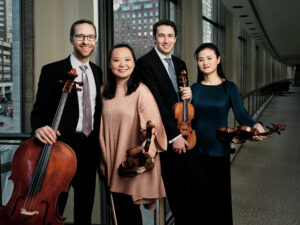 Noah Bendix-Balgley, first concertmaster of the Berlin Philharmonic; Shanshan Yao (Violin ’08), concert violinist and former member of the Pittsburgh Symphony and New York Philharmonic; Teng Li (Viola ’05), principal violist of the Los Angeles Philharmonic; and Nathan Vickery (Cello ’13), cellist in the New York Philharmonic. This phenomenal “Dream Quartet” continues to excite audiences with its distinctive sound and unanimity of expression.
Noah Bendix-Balgley, first concertmaster of the Berlin Philharmonic; Shanshan Yao (Violin ’08), concert violinist and former member of the Pittsburgh Symphony and New York Philharmonic; Teng Li (Viola ’05), principal violist of the Los Angeles Philharmonic; and Nathan Vickery (Cello ’13), cellist in the New York Philharmonic. This phenomenal “Dream Quartet” continues to excite audiences with its distinctive sound and unanimity of expression.
- March 25: Internationally renowned violist and Curtis president and CEO Roberto Díaz, GRAMMY Award-winning guitarist and Curtis faculty member Jason Vieaux, and Curtis students bring their spring Curtis on Tour guitar quartet concert to Philadelphia for one night only. A vibrant collision of global sounds, cultures, and sonic textures, the program begins with selections from Czech composer and celebrated 19th-century guitarist Wenzel Thomas Matiegka’s Notturno, Op. 21, arranged by Franz Schubert. This selection is followed by a fiery, crowd-pleasing set featuring Spanish composer and pianist Manuel de Falla’s Suite populaire espagnole and Argentinian legend Ástor Piazzolla’s Histoire du Tango. The concert closes with Niccolò Paganini’s lively Guitar Quartet in A minor, No. 15, M.S. 42.
- April 23: Lauded as “exquisite” by the Philadelphia Inquirer and “a pianist of sterling artistry” by Gramophone, Michelle Cann (’13), Eleanor Sokoloff Chair in Piano Studies at Curtis, has become one of the most sought-after pianists of her generation. In the closing concert of the 2024–25 Curtis Presents series, Ms. Cann joins forces with renowned faculty members, the 2024 GRAMMY-winning ensemble Imani Winds—Brandon Patrick George, flute; Toyin Spellman-Diaz, oboe; Mark Dover, clarinet; Kevin Newton, horn; and Monica Ellis, bassoon—for a night of exhilarating performances and unparalleled artistry. This adventurous program includes Paquito D’Rivera’s A Little Cuban Jazz Waltz and a new work for wind quintet and piano by “wildly inventive” (New York Times) composer and alumnus Viet Cuong (’19)—a co-commission led by Curtis, written especially for the occasion. The concert also features Francis Poulenc’s Trio for Oboe, Bassoon, and Piano, FP 43; and GRAMMY-nominated flutist and composer Valerie Coleman’s six-movement suite inspired by Langston Hughes’s poetry, Portraits of Langston. The program closes with another Poulenc work, the French composer’s Sextet for Piano and Wind Quintet, FP 100.

100 for 100
Curtis presents the final works in its multi-year project to commission 100 works for the school’s centennial. 100 for 100 celebrates the music of our time with a showcase of fresh perspectives featuring original works inspired by and crafted for Curtis.
Curtis Centennial Gala
On May 8, 2025, Curtis will celebrate its annual gala at Philadelphia’s landmark archeological and anthropological institution, the Penn Museum. Curtis’ centennial gala will honor the school’s 100-year legacy of voice and opera, highlighting the music and influential artists that have shaped the culture of Curtis and the world’s classical music landscape. Guests will experience captivating performances by star alumnae J’Nai Bridges (Opera ’12), Amanda Majeski (Opera ’09), Karen Slack (Opera ’02), and other esteemed artists while savoring culinary delights and commemorating Curtis’ profound impact on the global music landscape. To learn more about this unforgettable evening of music honoring Curtis’ enduring impact, visit Curtis.edu/gala100.

Curtis Studio: A Century of New Sounds
Curtis Studio, the recording label of Curtis Institute of Music, brings the artistry and innovation of the school’s renowned and inspiring alumni, faculty, and students to audiences around the world. During its centennial year, Curtis Studio will debut A Century of New Sounds. This album celebrates famed alumni composers past and present, recorded from the school’s historic campus and performed by faculty, alumni, and students. The recording will feature chamber works of Samuel Barber (’34), Leonard Bernstein (Conducting ’41), Julius Eastman (’63), Jennifer Higdon (’88), Curtis composition faculty member Jonathan Bailey Holland (’96), David Serkin Ludwig (’01), Ned Rorem (’44), Gabriella Smith (’13), and George Walker (’45), and will be available in all major music stores October 2024.
Curtis Recital Series
Curtis’ promise of learn-by-doing is on full display in the Curtis Recital Series. From young student artists experiencing their first professional performance to faculty who’ve played on stages across the globe, this series showcases all that Curtis has to offer as musicians and educators. Recitals are free, but advance registration is required.
- Student Recitals: Over 100 free recitals are on offer throughout the school year on most Monday, Wednesday, and Friday evenings starting in mid-October.
- Graduation Recitals: During the spring semester, Curtis students on the cusp of their professional careers display their skill and passion in a culminating recital.
- Faculty and Studio Recitals: Curtis’ world-renowned faculty are active musicians with years of professional performance experience on international stages. These acclaimed musicians and educators display the depth of their knowledge and abilities during recitals at Curtis.
Curtis on Tour
Curtis on Tour celebrates Curtis’ centennial with more than 35 concerts across the globe—from chamber music to the Curtis Symphony Orchestra. Alumni and faculty performing on tour include Teddy Abrams, Michelle Cann, Ray Chen, Roberto Díaz, the Dover Quartet, Jason Vieaux, and Peter Wiley. Performance venues include the 92nd Street Y, New York, through the Curtis at 92NY collaboration; the Kravis Center in West Palm Beach, Fla.; and the Mondavi Center in Davis, Calif.; as well as performances abroad in Belgium, Germany, Greece, and Spain.
Visit Curtis.edu/100 throughout the 2024–25 season to view all upcoming performances and events.
New Curtis Logo and Brand
As part of the 2024–25 season, Curtis will launch a new logo and visual system based on extensive research and collaboration across the school’s community of stakeholders during a multi-year rebranding project. Created by the renowned design firm, Pentagram, and led by principal Paula Scher, the new logo is inspired by musical sounds, notations, and gestures, including the many expressive ways that musicians use their hands to make music. The new brand system will be implemented in June 2024.
Ticketing Information
Subscriptions for the 2024–25 season go on sale April 2. The flexible Choose Your Own subscription option offers 25% off ticket prices when purchasing tickets to two or more performances. For the 2024–25 season, Curtis is also offering a Season Pass, with access to all events in 2024–25 for one flat rate of $279. Each Season Pass is valid for one best-available ticket to each paid season performance. To order a subscription, visit Curtis.edu/100 , call (215) 893-7902, or email tickets@curtis.edu.
Single tickets for the 2024–25 season start at $24 and will be available on May 7.
Philanthropic Support for Curtis’ 2024–25 Season
Curtis’ centennial season is made possible through the support of Derek and Sissela Bok, the Mary Louise Curtis Bok Foundation, Deborah M. Fretz, Charles C. Freyer and Judith Durkin Freyer, Lisa and Gie Liem, and Mark and Robin Rubenstein.
Guest conductor appearances for each Curtis Symphony Orchestra performance are made possible by the Rita E. and Gustave M. Hauser Chair in Conducting Studies. Orchestral concerts are supported by the Jack Wolgin Curtis Orchestral Concerts Endowment Fund and the Pennsylvania Tourism Office.
Curtis Opera Theatre is generously supported by the Ernestine Bacon Cairns Trust, the Horace W. Goldsmith Foundation, and the Wyncote Foundation.
Generous support for Curtis New Music Ensemble is provided by the Daniel W. Dietrich II Foundation.
Curtis Institute of Music received funding from the Pennsylvania Council on the Arts, a state agency funded by the Commonwealth of Pennsylvania and the National Endowment for the Arts.
About the Curtis Institute of Music
At Curtis, the world’s most talented young musicians develop into exceptional artists, creators, and innovators. With a tuition-free foundation, Curtis is a unique environment for teaching and learning. A small school by design, students realize their artistic potential through intensive, individualized study with the most renowned, sought-after faculty. Animated by a learn-by-doing philosophy, Curtis students share their music with audiences through more than 100 performances each year, including solo and chamber recitals, orchestral concerts, and opera—all free or at an affordable cost—offering audiences unique opportunities to participate in pivotal moments in these young musicians’ careers. Curtis students experience a close connection to the greatest artists and organizations in classical music, and innovative initiatives that integrate new technologies and encourage entrepreneurship—all within an historic campus in the heart of culturally rich Philadelphia. In this diverse, collaborative community, Curtis’ extraordinary artists challenge, support, and inspire one another—continuing an unparalleled 100-year legacy of musicians who have led, and will lead, classical music into a thriving, equitable, and multidimensional future. Learn more at Curtis.edu.
Photo credits: Curtis Symphony Orchestra and cellists Nygel Witherspoon and Elliott Sloss (Margo Reed Studio); Time for Three (courtesy of the artists); Yannick Nézet-Séguin with Curtis Symphony Orchestra (David DeBalko); Ray Chen (Tom Doms); Yuja Wang (Kirk Edwards); Yuval Sharon (Casey Kringlen); Nic McGegan (Dario Acosta); Emma Griffin (courtesy of the artist); Gabriela Ortiz (courtesy of OAcademy Music Conservatory); Amy Beth Kirsten (courtesy of the artist); Dover Quartet (Roy Cox); Rosamunde String Quartet (Rob Davidson); Imani Winds (Shervin Lainez; Arts Management Group); Michelle Cann (Titilayo Ayangade); J’Nai Bridges (Dario Acosta); Amanda Majeski (Fay Fox); and Karen Slack (Kia Caldwell).
# # #
 performances of over 50 soprano and mezzo-soprano roles. Throughout her career, she graced the stages of such prestigious houses as the Opéra de la Bastille, Théâtre du Châtelet in Paris, Opéra de Lyon, Netherlands Opera, Staatsoper Stuttgart, l’Opéra Royal de Wallonie in Belgium, and Houston Grand Opera, and appeared as soloist with such orchestras as the New York Philharmonic and the Czech Philharmonic before joining the faculty of Roberts Wesleyan University as the director of vocal studies and associate professor of vocal performance in Rochester, New York. Ms. Fee has also taught voice and French diction on the faculty of the Franco-American Vocal Academy in Périgueux, France, and since 2014, has been a member of the voice faculty of the Crescendo Summer Institute in Tokaj, Hungary.
performances of over 50 soprano and mezzo-soprano roles. Throughout her career, she graced the stages of such prestigious houses as the Opéra de la Bastille, Théâtre du Châtelet in Paris, Opéra de Lyon, Netherlands Opera, Staatsoper Stuttgart, l’Opéra Royal de Wallonie in Belgium, and Houston Grand Opera, and appeared as soloist with such orchestras as the New York Philharmonic and the Czech Philharmonic before joining the faculty of Roberts Wesleyan University as the director of vocal studies and associate professor of vocal performance in Rochester, New York. Ms. Fee has also taught voice and French diction on the faculty of the Franco-American Vocal Academy in Périgueux, France, and since 2014, has been a member of the voice faculty of the Crescendo Summer Institute in Tokaj, Hungary.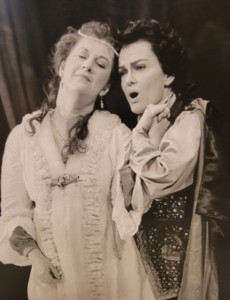
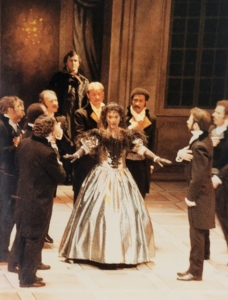 When it came time to graduate from Westminster, I had a wonderful teacher who taught an opera course. After my student teaching in the fall of my senior year, he sat me down and asked, “Graduating in May, are we? What are you going to do?” I said, “I know one thing: I’m not teaching in public school. It’s not for me.” He laughed and said, “You know you have to sing, right?” I said, “Yes.”
When it came time to graduate from Westminster, I had a wonderful teacher who taught an opera course. After my student teaching in the fall of my senior year, he sat me down and asked, “Graduating in May, are we? What are you going to do?” I said, “I know one thing: I’m not teaching in public school. It’s not for me.” He laughed and said, “You know you have to sing, right?” I said, “Yes.”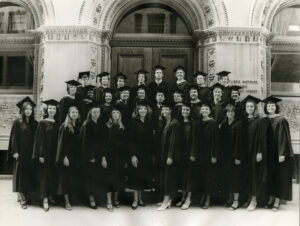 My audition at Curtis was interesting. At Westminster, we had a small vocal group that did baroque music. The conductor of that group gave me a wonderful bravura aria by [Polish Baroque-era composer] Damian Stachowicz, with lots of runs and high notes. I learned it and used it for my audition at Curtis, along with a Mozart aria and some other pieces. I was singing mezzo at the time, and I had my four pieces but no opera experience. They were all there at the audition—Rudolf Serkin, Mme. Gregory, Max Rudolf, Dino Yiannopoulos, and Ms. Harshaw. At the time, I didn’t really understand what Curtis was: To me, it was just this music school in a house behind the Academy of Music, where Westminster Choir performed often. I just knew that I wanted to study with that teacher.
My audition at Curtis was interesting. At Westminster, we had a small vocal group that did baroque music. The conductor of that group gave me a wonderful bravura aria by [Polish Baroque-era composer] Damian Stachowicz, with lots of runs and high notes. I learned it and used it for my audition at Curtis, along with a Mozart aria and some other pieces. I was singing mezzo at the time, and I had my four pieces but no opera experience. They were all there at the audition—Rudolf Serkin, Mme. Gregory, Max Rudolf, Dino Yiannopoulos, and Ms. Harshaw. At the time, I didn’t really understand what Curtis was: To me, it was just this music school in a house behind the Academy of Music, where Westminster Choir performed often. I just knew that I wanted to study with that teacher.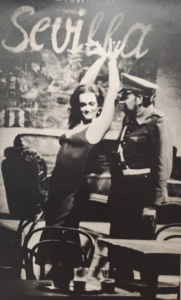 I started with the baroque piece, and then they asked for “Must the Winter Come so Soon” [from Samuel Barber’s (Composition ’34) opera Vanessa]. The woman playing the audition was also on staff at the Music Academy of the West, so it’s not possible that she didn’t know the repertoire. As she started playing the Barber, I realized something was wrong and said to her out loud, “Oh no, that’s the wrong tempo!” I think they might have wanted to see how I would handle that. In the end, I did just fine. Anyway, I got into both schools, and when the assignments came, I was put in Charles Kullman’s studio. [Eventually, Ms. Fee switched studios to work with Margaret Harshaw, followed her to Indiana, and ultimately, back to Curtis].
I started with the baroque piece, and then they asked for “Must the Winter Come so Soon” [from Samuel Barber’s (Composition ’34) opera Vanessa]. The woman playing the audition was also on staff at the Music Academy of the West, so it’s not possible that she didn’t know the repertoire. As she started playing the Barber, I realized something was wrong and said to her out loud, “Oh no, that’s the wrong tempo!” I think they might have wanted to see how I would handle that. In the end, I did just fine. Anyway, I got into both schools, and when the assignments came, I was put in Charles Kullman’s studio. [Eventually, Ms. Fee switched studios to work with Margaret Harshaw, followed her to Indiana, and ultimately, back to Curtis].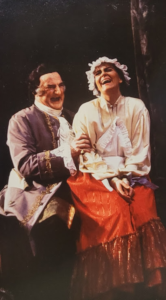 I was there with Sharon Sweet, Carlos Serrano (Opera ’77), Michael Myers (Opera ’77), and Sally Wolf (Opera ’77), now teaching at AVA. I spent time at IU from ’73 to ’76, went to Marlboro for the summer, and then went back to Curtis for the opera program in the fall of 1976. Then, in the spring of my opera certificate year at Curtis, which was Harshaw’s last year, Curtis got a call from Plato Karayanis (Voice ’56) asking for a baritone and a mezzo to come to NYC to audition for the first year of the Merola program. [Ms. Fee auditioned alongside baritone Carlos Serrano for Mr. Karayanis but was recommended for the inaugural Houston Opera Studio with Houston Grand Opera].
I was there with Sharon Sweet, Carlos Serrano (Opera ’77), Michael Myers (Opera ’77), and Sally Wolf (Opera ’77), now teaching at AVA. I spent time at IU from ’73 to ’76, went to Marlboro for the summer, and then went back to Curtis for the opera program in the fall of 1976. Then, in the spring of my opera certificate year at Curtis, which was Harshaw’s last year, Curtis got a call from Plato Karayanis (Voice ’56) asking for a baritone and a mezzo to come to NYC to audition for the first year of the Merola program. [Ms. Fee auditioned alongside baritone Carlos Serrano for Mr. Karayanis but was recommended for the inaugural Houston Opera Studio with Houston Grand Opera].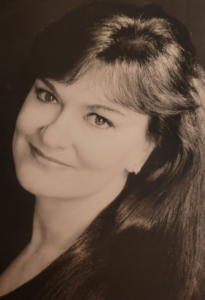 I had already decided to go to Europe, visit my friends who had fest positions there, and do some auditions. But I thought, well if he’s gone to this trouble, I’ll go ahead and do the HGO audition. So I went back to New York, walked into the cattle call, and saw all the divas with the hair, dresses, and makeup milling around. I went in for my turn and saw the little table with the phone David Gockley had spoken on when I called him to arrange my audition time. There he was with Carlisle Floyd. I walked in, and sang my entire package: Composer’s Aria, Cenerentola, a French aria, and I was probably still using “Must the Winter Come so Soon” [from Samuel Barber’s Vanessa] for my English aria. As I came down the steps of the little stage, Carlisle Floyd took my elbow, walked me out into the lobby with all the other singers, and said, “You’re exactly what we’re looking for. Can you come to Houston at the end of August? This program is to replace the need for American singers to have to go to Europe to start their careers.”
I had already decided to go to Europe, visit my friends who had fest positions there, and do some auditions. But I thought, well if he’s gone to this trouble, I’ll go ahead and do the HGO audition. So I went back to New York, walked into the cattle call, and saw all the divas with the hair, dresses, and makeup milling around. I went in for my turn and saw the little table with the phone David Gockley had spoken on when I called him to arrange my audition time. There he was with Carlisle Floyd. I walked in, and sang my entire package: Composer’s Aria, Cenerentola, a French aria, and I was probably still using “Must the Winter Come so Soon” [from Samuel Barber’s Vanessa] for my English aria. As I came down the steps of the little stage, Carlisle Floyd took my elbow, walked me out into the lobby with all the other singers, and said, “You’re exactly what we’re looking for. Can you come to Houston at the end of August? This program is to replace the need for American singers to have to go to Europe to start their careers.”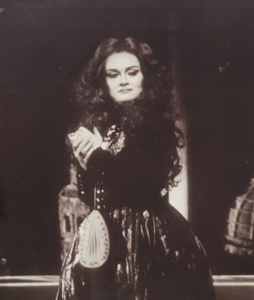 There were often performances in II-J, including Rigoletto and Pelléas et Mélisande. We did some big productions there with piano; we also performed at the Walnut Street Theatre, where I did a Così [fan tutte] with Julia Conwell (Opera ’77) as my Fiordiligi. I remember a wonderful performance of A Midsummer Night’s Dream there. My nickname was “Hermia-on-the-Ground” because of one of the lines in the text. Gwendolyn Bradley (Opera ’77) was singing Tytania. Someone in the cast wore a long train in that production, and there I am, on the ground; they walk over me, and the train with all the dust and dirt is dragged over my head while I’m lying there. [Laughs] After Curtis, my life took a completely different direction than I had ever anticipated. Now, I’m in my second career and I’ve been teaching longer than my 20-year performing career.
There were often performances in II-J, including Rigoletto and Pelléas et Mélisande. We did some big productions there with piano; we also performed at the Walnut Street Theatre, where I did a Così [fan tutte] with Julia Conwell (Opera ’77) as my Fiordiligi. I remember a wonderful performance of A Midsummer Night’s Dream there. My nickname was “Hermia-on-the-Ground” because of one of the lines in the text. Gwendolyn Bradley (Opera ’77) was singing Tytania. Someone in the cast wore a long train in that production, and there I am, on the ground; they walk over me, and the train with all the dust and dirt is dragged over my head while I’m lying there. [Laughs] After Curtis, my life took a completely different direction than I had ever anticipated. Now, I’m in my second career and I’ve been teaching longer than my 20-year performing career.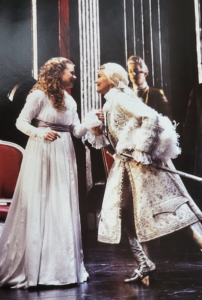 Miss Harshaw started her Met career as a mezzo and then switched to soprano. As I understand it, she still holds the record for performing the most Wagner roles there because she sang all the mezzo roles and then all the soprano roles. She had years of experience and knew what she was doing. She had incredible training and was a remarkable teacher.
Miss Harshaw started her Met career as a mezzo and then switched to soprano. As I understand it, she still holds the record for performing the most Wagner roles there because she sang all the mezzo roles and then all the soprano roles. She had years of experience and knew what she was doing. She had incredible training and was a remarkable teacher.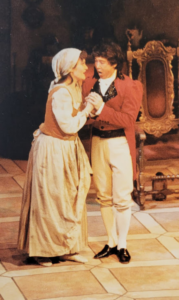
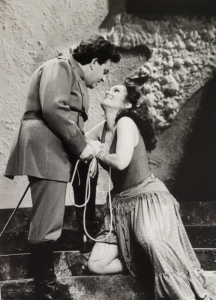 Then there were her stories. I would listen to stories for hours, learning about the profession. When an interviewer once asked her the most important qualities a singer must have to become a successful artist, she said, “Integrity, integrity, and integrity.” Now, I try to guide my students to their own natural instincts. I tell them that I can’t teach them how to sing, but I can show them that they already know how. As a singer, it’s probably never going to sound good to you in your own head. You may not like how you think it sounds, but you’re going to love how it feels.
Then there were her stories. I would listen to stories for hours, learning about the profession. When an interviewer once asked her the most important qualities a singer must have to become a successful artist, she said, “Integrity, integrity, and integrity.” Now, I try to guide my students to their own natural instincts. I tell them that I can’t teach them how to sing, but I can show them that they already know how. As a singer, it’s probably never going to sound good to you in your own head. You may not like how you think it sounds, but you’re going to love how it feels.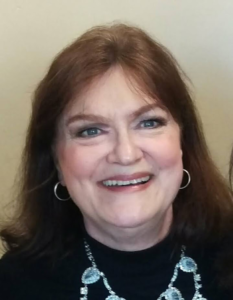 Focus on your gift and on developing it to its fullest potential. Get the help you need. Speak up. Be your own advocate. Don’t just do what you see other people do. Do what’s right for you. There’s no written pathway now. When I was at Curtis and IU, there was a path you could follow that was already laid out: You went to Europe, sang for the agents, got a fest job in an opera house, and gained your street creds there. Now, you can make videos, put them up on Instagram, and start your career here. There’s no clear, defined pathway now. You can make your own pathway, but always be true to yourself. Don’t let other people take advantage of your talent, and don’t use it to get somewhere. Use it to say something. Whoever you are, you are unique, and you owe it to the world to discover your gifts and develop your art.
Focus on your gift and on developing it to its fullest potential. Get the help you need. Speak up. Be your own advocate. Don’t just do what you see other people do. Do what’s right for you. There’s no written pathway now. When I was at Curtis and IU, there was a path you could follow that was already laid out: You went to Europe, sang for the agents, got a fest job in an opera house, and gained your street creds there. Now, you can make videos, put them up on Instagram, and start your career here. There’s no clear, defined pathway now. You can make your own pathway, but always be true to yourself. Don’t let other people take advantage of your talent, and don’t use it to get somewhere. Use it to say something. Whoever you are, you are unique, and you owe it to the world to discover your gifts and develop your art. Throughout the 2024–25 season, Great to Groundbreaking, Curtis students—some of the finest young musicians in the world—move from the classroom to the stage, sharing their extraordinary passion for classical music through thrilling performances alongside internationally renowned guest artists, faculty, and alumni. The centennial season combines beloved repertoire favorites—such as Jean Sibelius’ Finlandia; Florence Price’s Symphony No. 1; Samuel Barber’s Violin Concerto, Op. 14; Antonín Dvořák’s Symphony No. 8; Claude Debussy’s La mer; and Leonard Bernstein’s No. 2, “The Age of Anxiety,” and comic operetta, Candide—with breathtaking new works—including the East Coast premiere of The Comet / Poppea at Philadelphia’s 23rd Street Armory, featuring composer George Lewis’ setting of W.E.B. Du Bois’ proto-Afrofuturist science fiction short story, The Comet, juxtaposed with Claudio Monteverdi’s hot-blooded political thriller, L’incoronazione di Poppea. The season also features an array of new compositions, world premieres, and much more. Subscription tickets are available April 2 at
Throughout the 2024–25 season, Great to Groundbreaking, Curtis students—some of the finest young musicians in the world—move from the classroom to the stage, sharing their extraordinary passion for classical music through thrilling performances alongside internationally renowned guest artists, faculty, and alumni. The centennial season combines beloved repertoire favorites—such as Jean Sibelius’ Finlandia; Florence Price’s Symphony No. 1; Samuel Barber’s Violin Concerto, Op. 14; Antonín Dvořák’s Symphony No. 8; Claude Debussy’s La mer; and Leonard Bernstein’s No. 2, “The Age of Anxiety,” and comic operetta, Candide—with breathtaking new works—including the East Coast premiere of The Comet / Poppea at Philadelphia’s 23rd Street Armory, featuring composer George Lewis’ setting of W.E.B. Du Bois’ proto-Afrofuturist science fiction short story, The Comet, juxtaposed with Claudio Monteverdi’s hot-blooded political thriller, L’incoronazione di Poppea. The season also features an array of new compositions, world premieres, and much more. Subscription tickets are available April 2 at  Hailed as “both a conservatory and a buzzword…known for taking the best music students in the world” (Washington Post), Curtis is excited to welcome its 160-member student body of exceptionally gifted young musicians to the school this fall as they hone their impressive artistic talents. In this unique and inclusive environment, they are nurtured by a celebrated faculty, supported by a merit-based, tuition-free policy, and inspired by the school’s distinctive learn-by-doing approach.
Hailed as “both a conservatory and a buzzword…known for taking the best music students in the world” (Washington Post), Curtis is excited to welcome its 160-member student body of exceptionally gifted young musicians to the school this fall as they hone their impressive artistic talents. In this unique and inclusive environment, they are nurtured by a celebrated faculty, supported by a merit-based, tuition-free policy, and inspired by the school’s distinctive learn-by-doing approach. October 27: In the opening concert of the Curtis Symphony Orchestra series, eminent Finnish conductor Osmo Vänskä leads the Curtis Symphony Orchestra and GRAMMY Award-winning ensemble Time For Three in a concert of towering works that celebrate the extraordinary resilience of the human spirit in the face of great adversity, and defy genre with Jean Sibelius’ patriotic tone poem Finlandia, Jennifer Higdon’s (’88) bluegrass-tinged Concerto 4-3, and Sergei Prokofiev’s heroic Symphony No. 5.
October 27: In the opening concert of the Curtis Symphony Orchestra series, eminent Finnish conductor Osmo Vänskä leads the Curtis Symphony Orchestra and GRAMMY Award-winning ensemble Time For Three in a concert of towering works that celebrate the extraordinary resilience of the human spirit in the face of great adversity, and defy genre with Jean Sibelius’ patriotic tone poem Finlandia, Jennifer Higdon’s (’88) bluegrass-tinged Concerto 4-3, and Sergei Prokofiev’s heroic Symphony No. 5. November 23:
November 23: December 13: The continues with an electrifying performance by prizewinning violinist Ray Chen (’10) under the baton of acclaimed composer, pianist, and clarinetist Teddy Abrams (Conducting ’08). The program features composer and producer TJ Cole’s (’17) moving work Death of a Poet, and legendary composer George Walker’s (Piano and Composition ’45) landmark 1996 Pulitzer Prize-winning song cycle for vocal soloist and orchestra, Lilacs. Mr. Chen performs Samuel Barber’s (’34) monumental Violin Concerto, and the concert concludes with Aaron Copland’s ambitious, patriotic Symphony No. 3.
December 13: The continues with an electrifying performance by prizewinning violinist Ray Chen (’10) under the baton of acclaimed composer, pianist, and clarinetist Teddy Abrams (Conducting ’08). The program features composer and producer TJ Cole’s (’17) moving work Death of a Poet, and legendary composer George Walker’s (Piano and Composition ’45) landmark 1996 Pulitzer Prize-winning song cycle for vocal soloist and orchestra, Lilacs. Mr. Chen performs Samuel Barber’s (’34) monumental Violin Concerto, and the concert concludes with Aaron Copland’s ambitious, patriotic Symphony No. 3.
 April 26: The 2024–25 series concludes with a guest appearance by one of the world’s most celebrated pianists, superstar Curtis alumna Yuja Wang (’08), performing Leonard Bernstein’s (Conducting ’41) astonishing, jazz-influenced Symphony No. 2, “The Age of Anxiety.” She joins the Curtis Symphony Orchestra and conductor Yannick Nézet-Séguin for a delightful program of classical music masterpieces featuring Lili Boulanger’s joyful D’un Matin de printemps (Of a Spring Morning), Maurice Ravel’s sumptuous orchestral song cycle Shéhérazade, and Claude Debussy’s evocative childhood recollections of the sea, the atmospheric symphonic sketches, La mer.
April 26: The 2024–25 series concludes with a guest appearance by one of the world’s most celebrated pianists, superstar Curtis alumna Yuja Wang (’08), performing Leonard Bernstein’s (Conducting ’41) astonishing, jazz-influenced Symphony No. 2, “The Age of Anxiety.” She joins the Curtis Symphony Orchestra and conductor Yannick Nézet-Séguin for a delightful program of classical music masterpieces featuring Lili Boulanger’s joyful D’un Matin de printemps (Of a Spring Morning), Maurice Ravel’s sumptuous orchestral song cycle Shéhérazade, and Claude Debussy’s evocative childhood recollections of the sea, the atmospheric symphonic sketches, La mer. November 1–3: Curtis Opera Theatre launches its historic 2024–25 series with the highly anticipated East Coast premiere of The Comet / Poppea, featuring MacArthur Award-winning composer George Lewis’ and librettist Douglas Kearney’s wildly inventive operatic setting of Pan-Africanist civil rights activist W.E.B. Du Bois’ 1920 science fiction short story, The Comet, juxtaposed with Claudio Monteverdi’s hot-blooded political thriller, L’incoronazione di Poppea (The Coronation of Poppea) from 1643. Presented at Philadelphia’s historic 23rd Street Armory on a turntable stage divided in two halves, these worlds unfold simultaneously, with the stage’s rotation creating a visual and sonic spiral for audiences—inviting associations, dissociations, collisions, and confluences. Directed and conceived by fellow MacArthur-winner Yuval Sharon, this innovative co-production features a stellar cast of Curtis singers led by conductor Marc Lowenstein, founding music director of The Industry in Los Angeles. Developed over six years, The Comet / Poppea is realized through a landmark partnership among organizations across the United States, produced by Anthony Roth Costanzo and Cath Brittan, The Industry, AMOC* (American Modern Opera Company), and Curtis Institute of Music. Performed in English and Italian with English supertitles.
November 1–3: Curtis Opera Theatre launches its historic 2024–25 series with the highly anticipated East Coast premiere of The Comet / Poppea, featuring MacArthur Award-winning composer George Lewis’ and librettist Douglas Kearney’s wildly inventive operatic setting of Pan-Africanist civil rights activist W.E.B. Du Bois’ 1920 science fiction short story, The Comet, juxtaposed with Claudio Monteverdi’s hot-blooded political thriller, L’incoronazione di Poppea (The Coronation of Poppea) from 1643. Presented at Philadelphia’s historic 23rd Street Armory on a turntable stage divided in two halves, these worlds unfold simultaneously, with the stage’s rotation creating a visual and sonic spiral for audiences—inviting associations, dissociations, collisions, and confluences. Directed and conceived by fellow MacArthur-winner Yuval Sharon, this innovative co-production features a stellar cast of Curtis singers led by conductor Marc Lowenstein, founding music director of The Industry in Los Angeles. Developed over six years, The Comet / Poppea is realized through a landmark partnership among organizations across the United States, produced by Anthony Roth Costanzo and Cath Brittan, The Industry, AMOC* (American Modern Opera Company), and Curtis Institute of Music. Performed in English and Italian with English supertitles. February 27–March 2: The Curtis Opera Theatre’s series continues with one of the great comic operas, Wolfgang Amadeus Mozart’s masterpiece, Le nozze di Figaro, a razor-sharp social satire with glorious arias, hilarious duets and trios, a toe-tapping overture, and an ingenious libretto that bursts to the seams with wit and invention. Distinguished conductor Nicholas McGegan OBE and acclaimed director Marcus Shields return to lead an exciting cast of young opera stars and the Curtis Symphony Orchestra at the Perelman Theater, Kimmel Center. Performed in Italian with English supertitles.
February 27–March 2: The Curtis Opera Theatre’s series continues with one of the great comic operas, Wolfgang Amadeus Mozart’s masterpiece, Le nozze di Figaro, a razor-sharp social satire with glorious arias, hilarious duets and trios, a toe-tapping overture, and an ingenious libretto that bursts to the seams with wit and invention. Distinguished conductor Nicholas McGegan OBE and acclaimed director Marcus Shields return to lead an exciting cast of young opera stars and the Curtis Symphony Orchestra at the Perelman Theater, Kimmel Center. Performed in Italian with English supertitles. April 11, 13: This historic Curtis Opera Theatre series closes with Leonard Bernstein’s (Conducting ’41) 20th-century operetta, Candide at the Forrest Theatre, one of America’s oldest theaters. Filled with sparkling wit, soaring melodies, and globe-trotting grandeur, this bitingly clever adaptation of Voltaire’s philosophical French novella is an absurdist romp across “the best of all possible worlds.” Led by internationally renowned conductor David Charles Abell and visionary theater and opera director Emma Griffin, this darkly satirical tale of youthful innocence and human folly in war-torn times of crisis is as relevant today as it was when it was first published in 1759. Performed in English with English supertitles.
April 11, 13: This historic Curtis Opera Theatre series closes with Leonard Bernstein’s (Conducting ’41) 20th-century operetta, Candide at the Forrest Theatre, one of America’s oldest theaters. Filled with sparkling wit, soaring melodies, and globe-trotting grandeur, this bitingly clever adaptation of Voltaire’s philosophical French novella is an absurdist romp across “the best of all possible worlds.” Led by internationally renowned conductor David Charles Abell and visionary theater and opera director Emma Griffin, this darkly satirical tale of youthful innocence and human folly in war-torn times of crisis is as relevant today as it was when it was first published in 1759. Performed in English with English supertitles. October 12: The first concert of the Curtis New Music Ensemble series celebrates this year’s composer in residence with a “Portrait of Gabriela Ortiz,” featuring works by the Latin GRAMMY-nominated composer and educator. One of Mexico’s most prominent composers, with an international career that includes recent commissions from the Los Angeles Philharmonic and the New York Philharmonic to the BBC Scottish Symphony and the Royal Liverpool Philharmonic, Ms. Ortiz’s music incorporates seemingly disparate musical worlds, from traditional and popular idioms to avant-garde techniques and multimedia works.
October 12: The first concert of the Curtis New Music Ensemble series celebrates this year’s composer in residence with a “Portrait of Gabriela Ortiz,” featuring works by the Latin GRAMMY-nominated composer and educator. One of Mexico’s most prominent composers, with an international career that includes recent commissions from the Los Angeles Philharmonic and the New York Philharmonic to the BBC Scottish Symphony and the Royal Liverpool Philharmonic, Ms. Ortiz’s music incorporates seemingly disparate musical worlds, from traditional and popular idioms to avant-garde techniques and multimedia works.
 October 25: The 2024–25 Curtis Presents series kicks off with another “masterly nuanced performance” (Wall Street Journal) from the Dover Quartet, the Penelope P. Watkins Ensemble in Residence, featuring Joel Link (String Quartet ’14, Violin ’11), and Bryan Lee (String Quartet ’14, Violin ’11), violist Julianne Lee (Violin ’05), and Camden Shaw (String Quartet ’14, Cello ’11, ’10). This riveting program features Jessie Montgomery’s folk music-inspired Strum; Pura Fé’s Rattle Song, arranged by Jerod Impichchaachaaha’ Tate; a new, Curtis-led co-commissioned work for string quartet composed by Mr. Tate; and Antonin Dvořák’s String Quartet in F major, Op. 96 (“American”). Named one of the greatest string quartets of the last 100 years by BBC Music Magazine, the two-time GRAMMY-nominated ensemble is one of the world’s most in-demand chamber ensembles. The prize-winning quartet was formed at Curtis in 2008, and its name pays tribute to the composition Dover Beach by fellow Curtis alumnus Samuel Barber.
October 25: The 2024–25 Curtis Presents series kicks off with another “masterly nuanced performance” (Wall Street Journal) from the Dover Quartet, the Penelope P. Watkins Ensemble in Residence, featuring Joel Link (String Quartet ’14, Violin ’11), and Bryan Lee (String Quartet ’14, Violin ’11), violist Julianne Lee (Violin ’05), and Camden Shaw (String Quartet ’14, Cello ’11, ’10). This riveting program features Jessie Montgomery’s folk music-inspired Strum; Pura Fé’s Rattle Song, arranged by Jerod Impichchaachaaha’ Tate; a new, Curtis-led co-commissioned work for string quartet composed by Mr. Tate; and Antonin Dvořák’s String Quartet in F major, Op. 96 (“American”). Named one of the greatest string quartets of the last 100 years by BBC Music Magazine, the two-time GRAMMY-nominated ensemble is one of the world’s most in-demand chamber ensembles. The prize-winning quartet was formed at Curtis in 2008, and its name pays tribute to the composition Dover Beach by fellow Curtis alumnus Samuel Barber. Noah Bendix-Balgley, first concertmaster of the Berlin Philharmonic; Shanshan Yao (Violin ’08), concert violinist and former member of the Pittsburgh Symphony and New York Philharmonic; Teng Li (Viola ’05), principal violist of the Los Angeles Philharmonic; and Nathan Vickery (Cello ’13), cellist in the New York Philharmonic. This phenomenal “Dream Quartet” continues to excite audiences with its distinctive sound and unanimity of expression.
Noah Bendix-Balgley, first concertmaster of the Berlin Philharmonic; Shanshan Yao (Violin ’08), concert violinist and former member of the Pittsburgh Symphony and New York Philharmonic; Teng Li (Viola ’05), principal violist of the Los Angeles Philharmonic; and Nathan Vickery (Cello ’13), cellist in the New York Philharmonic. This phenomenal “Dream Quartet” continues to excite audiences with its distinctive sound and unanimity of expression.

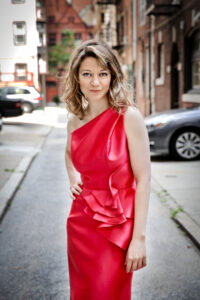 “Mimi Stillman is not only a consummate and charismatic performer, but also a scholar. Her programs tend to activate, ear, heart, and brain.” —New York Times
“Mimi Stillman is not only a consummate and charismatic performer, but also a scholar. Her programs tend to activate, ear, heart, and brain.” —New York Times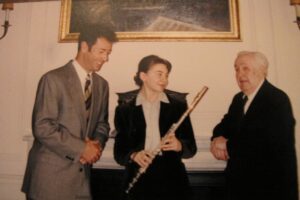 Ms. Stillman is the founder and artistic director of
Ms. Stillman is the founder and artistic director of 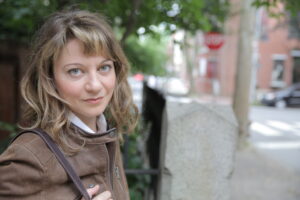
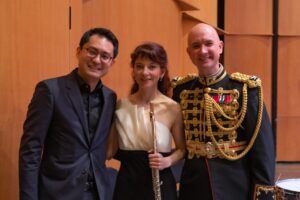
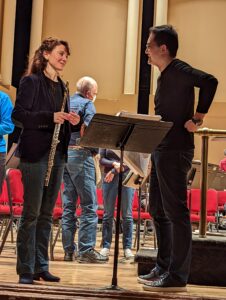 I studied with two extraordinary teachers, the legendary Julius Baker, who brought me to C
I studied with two extraordinary teachers, the legendary Julius Baker, who brought me to C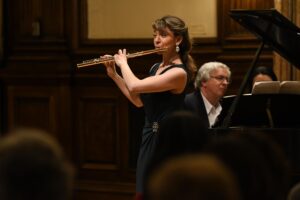 My family and closest mentors encouraged me to find my path to be fulfilled personally and artistically. I encourage my students to think carefully about channeling their dedication and discipline to where their passion lies. While performing as a soloist and chamber musician after graduating from Curtis, I got my M.A. and did Ph.D. coursework in history at the University of Pennsylvania. It’s deeply rewarding for me to integrate music and history in my work as a performer, published author, and media host and in my curatorial vision for Dolce Suono Ensemble.
My family and closest mentors encouraged me to find my path to be fulfilled personally and artistically. I encourage my students to think carefully about channeling their dedication and discipline to where their passion lies. While performing as a soloist and chamber musician after graduating from Curtis, I got my M.A. and did Ph.D. coursework in history at the University of Pennsylvania. It’s deeply rewarding for me to integrate music and history in my work as a performer, published author, and media host and in my curatorial vision for Dolce Suono Ensemble.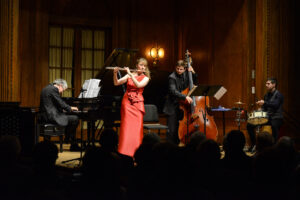 I feel blessed to share great music with others and to continually learn and grow while doing it. I strongly believe in the power of music to heal and bring people together, and love reaching communities who don’t have ease of access to concert music through outreach to people of all ages and diverse backgrounds. Growing up as a Spanish speaker with an affinity for Hispanic cultures led me organically to launch “Música en tus Manos” (Music in Your Hands), Dolce Suono Ensemble’s engagement initiative with Philadelphia’s Latino communities highlighting music by Latin American and Latino composers. I urge young musicians to embrace as many musical experiences as they can, to listen for those moments when something—a style, a genre, an interaction with another person through music—resonates with your inner voice as an artist.
I feel blessed to share great music with others and to continually learn and grow while doing it. I strongly believe in the power of music to heal and bring people together, and love reaching communities who don’t have ease of access to concert music through outreach to people of all ages and diverse backgrounds. Growing up as a Spanish speaker with an affinity for Hispanic cultures led me organically to launch “Música en tus Manos” (Music in Your Hands), Dolce Suono Ensemble’s engagement initiative with Philadelphia’s Latino communities highlighting music by Latin American and Latino composers. I urge young musicians to embrace as many musical experiences as they can, to listen for those moments when something—a style, a genre, an interaction with another person through music—resonates with your inner voice as an artist.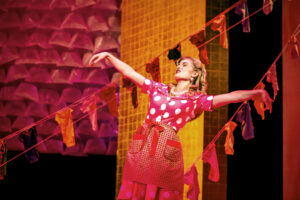 Curtis Opera Theatre‘s 2023–24 series featured a captivating double bill of Francis Poulenc’s outrageously funny farce, Les Mamelles de Tirésias and Kurt Weill and Bertolt Brecht’s darkly satirical “ballet chanté,” The Seven Deadly Sins on March 15 and 17 at the Philadelphia Film Center.
Curtis Opera Theatre‘s 2023–24 series featured a captivating double bill of Francis Poulenc’s outrageously funny farce, Les Mamelles de Tirésias and Kurt Weill and Bertolt Brecht’s darkly satirical “ballet chanté,” The Seven Deadly Sins on March 15 and 17 at the Philadelphia Film Center.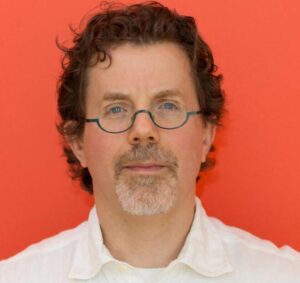 Throughout the month, Curtis will be collaborating with various local arts institutions and ensembles to elevate the presence of new classical music in Philadelphia using the social media hashtag, #NewMusicPhilly. These organizations and artists include Bowerbird, the Boyer College of Music and Dance at Temple University, Chamber Orchestra of Philadelphia, The Crossing, ENA Ensemble, Network for New Music, Penn Live Arts, Philadelphia Chamber Music Society, the University of Pennsylvania Department of Music, the Viano Quartet, Wildflower Composers, and a series of concerts at the Black Squirrel Club curated by Micah Gleason, the Rita E. Hauser Conducting Fellow at Curtis.
Throughout the month, Curtis will be collaborating with various local arts institutions and ensembles to elevate the presence of new classical music in Philadelphia using the social media hashtag, #NewMusicPhilly. These organizations and artists include Bowerbird, the Boyer College of Music and Dance at Temple University, Chamber Orchestra of Philadelphia, The Crossing, ENA Ensemble, Network for New Music, Penn Live Arts, Philadelphia Chamber Music Society, the University of Pennsylvania Department of Music, the Viano Quartet, Wildflower Composers, and a series of concerts at the Black Squirrel Club curated by Micah Gleason, the Rita E. Hauser Conducting Fellow at Curtis.
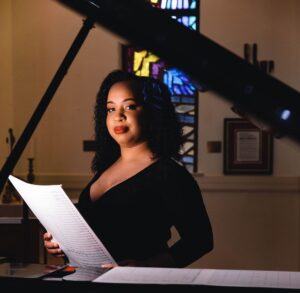
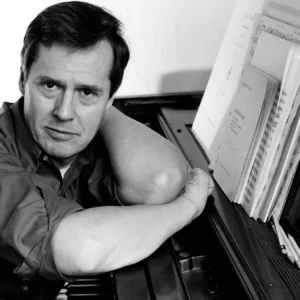

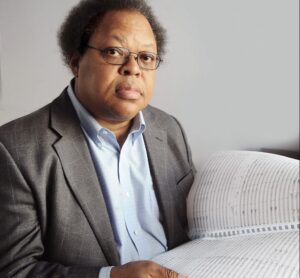 Ensemble 20/21, finishes its sold-out year on Saturday, April 13, 2024, at Gould Rehearsal Hall with a “Portrait of George Lewis.” A diverse concert of highlights from the MacArthur Fellow, pioneering composer, musical polymath, and trombonist’s catalogue opens with The Deformation of Mastery, inspired by African American literary theorist Houston A. Baker Jr.’s influential book Modernism and the Harlem Renaissance, a chamber orchestral work composed with the intent to break down and disrupt all notions of authenticity in Afrodiasporic sonic expression. This work is followed by his unnerving, quirkily percussive String Quartet 1.5: Experiments in Living and the striking work Anthem for mezzo-soprano, flute, tenor saxophone, drums, percussion, piano, violin, and electronics, which examines power and image, and how societies assign almost superhuman abilities to artists or bands with the expectation that the masses idolize and worship them.
Ensemble 20/21, finishes its sold-out year on Saturday, April 13, 2024, at Gould Rehearsal Hall with a “Portrait of George Lewis.” A diverse concert of highlights from the MacArthur Fellow, pioneering composer, musical polymath, and trombonist’s catalogue opens with The Deformation of Mastery, inspired by African American literary theorist Houston A. Baker Jr.’s influential book Modernism and the Harlem Renaissance, a chamber orchestral work composed with the intent to break down and disrupt all notions of authenticity in Afrodiasporic sonic expression. This work is followed by his unnerving, quirkily percussive String Quartet 1.5: Experiments in Living and the striking work Anthem for mezzo-soprano, flute, tenor saxophone, drums, percussion, piano, violin, and electronics, which examines power and image, and how societies assign almost superhuman abilities to artists or bands with the expectation that the masses idolize and worship them.